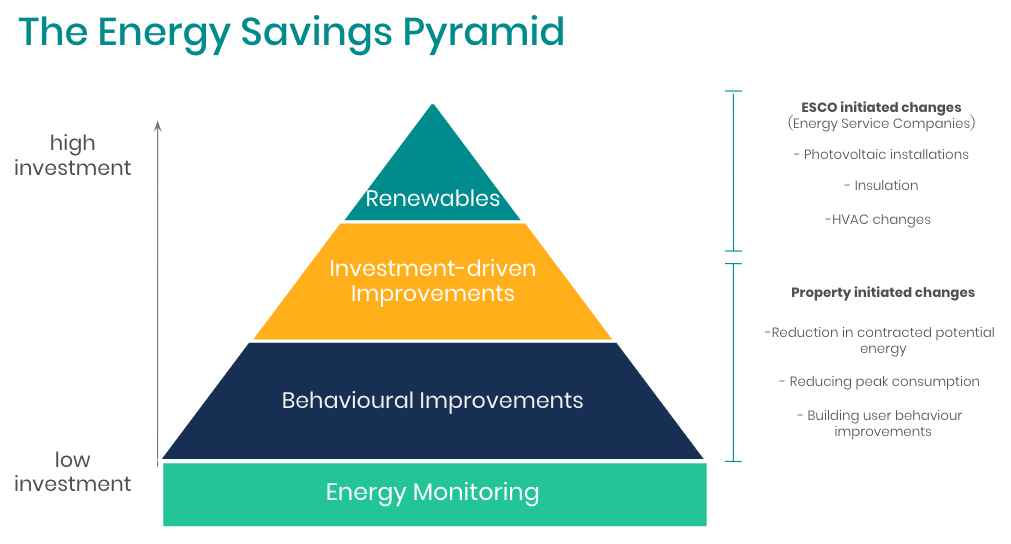There is no energy manager who has not feared energy efficiency. Despite increasingly tougher energy and environmental regulations, energy efficiency fundings and grants… Some customers still panic about investing in energy efficiency.
Today we help you to clear up the 5 most frequently asked questions that cause fear of energy efficiency in SMEs and other businesses.
What is the fear of energy efficiency?
Sometimes I like to call it “efficiency-phobia”. But more seriously, it exists and it is real. It is the fear of every SME or large business corporation manager to hear about energy efficiency.
This fear has two faces:
- The potential customer´s fear. It is based on false assumptions about energy efficiency (“it is expensive” “there is no return on investment” “I don’t have time for it”) and also on poorly answered key questions.
- The energy manager´s fear. We all dread the moment of presenting a new energy efficiency project for the first time to those in charge and facing those key questions...
So that you don’t lose any more projects because of this unfounded fear of energy efficiency, we are going to give you the answers you need. The answers to the 5 energy efficiency questions that have most often caused good professionals like you to miss out on opportunities.
Top 5 Energy Efficiency Questions that Scare the Energy Manager the most
1. Is an Energy Efficiency project really worthwhile?
First of all, you have to be honest when starting an energy efficiency project and admit that it has a certain degree of uncertainty. When you manage a facility for the first time, you do not know how efficient it is.
On the internet, you will find reports from “reputable” industry leaders claiming that “on average, the expected savings in your facilities are up to 30%”. Sounds good, but how do I know if my facility is part of this average?
Without talking about generic percentages, there is one real certainty: there is always room for improvement. But, is my savings potential greater in the building in Madrid or in my facilities in Barcelona?
Fortunately, nowadays and with just a few electricity bills, you can resolve these doubts for your client and get to your meeting with a personalised savings report for them. Learn more about Spacewell Energy (Dexma) Detect here.
2. Where should I start?
Once the customer understands what savings potential he/she has, it is time to show them the energy efficiency pyramid:
The higher we go on the pyramid levels, the more data (and investment) we need. After a first reading of energy bills, you need to collect real-time data. Otherwise, it would be as if the sales manager of your company had to identify inefficiencies and only had access to sales information every 6 months. That doesn’t make sense, does it?
We must admit that the next step is a piece of cake: monitoring and analysis. But the image of the pyramid is essential because it will make the project manager understand that it is only the first step towards success.
And also that the road to energy efficiency is not a relaxing weekend trip… And getting this point across is the key to keeping the customers of your energy services company happy for a longer time.
3. Can I just stick to Excel to control my Energy Costs?
We all love Excel. It is very versatile and can be used for many things. For example, we have this free Excel template with which, in 2 minutes, you can calculate the budget you need for a project.
But how can you answer this question? If we want to save energy, the ideal is to have a tool designed for this purpose. And when Microsoft created Excel, it wasn’t built with the objective of saving energy…
There are several essential reasons to motivate the project manager to exclude Excel:
- You will not be able to track your savings with the IPMVP protocol. You will guess that you are saving but… without any guarantees.
- You will not collect real-time data. Energy analysis software solves this issue and help you to detect problems when they are appearing. Not at the end of the month, when you get the “surprise” after receiving your bill, or after weeks of investigation when you discover that the air conditioning on the third floor of the building is not working properly. You will have already overpaid a lot of money…
4. What Technologies should I choose and why?
Well…, this is the Holy Grail of energy efficiency. There is no unique solution to use for the project. For the energy managers, fortunately, there are thousands of them.
But this means that the customer can get lost easily among so many options. This list of key questions to ask your Energy Management System Provider can help you.
If you solve this matter you will definitely prove your worth as an energy manager. This is why your experience and expertise are vital.
The 3 main problems in answering this question are:
-
- To be able to give recommendations on hardware and energy efficiency measuring devices. Check out our training kit on this topic.
- To be able to give quickly a quotation for the whole project. Measuring devices + energy analysis software + your services. Use the template we have already mentioned.
- Financing the project. Imagine how positive the impression you will make, if you already bring up some ideas to the meeting, on how your energy savings project can be financed. Do it with the help of this guide.
5. How will you prepare Customised Savings Reports for me?
Making a savings report is always complicated, isn’t it? The theory is simple: it is just about doing a “before and after” comparison. The problem is that the “before” building ceases to exist as soon as you make any facility modifications. To conclude, it’s like comparing the actual building with a ghost.
What you should keep in mind is that your energy management tool should help you build the “before” model of your building to allow you to verify the savings achieved. The best way to do this is to create a statistical model that is faithful to your previous consumption, the well-known baseline.
If you would like to know how to calculate your baseline, visit our support page.
And even more, your tool should allow you to track all energy efficiency improvements (investment portfolio style) and automatically run reports once a month for your managers.
If you work with Spacewell Energy (Dexma) Platform you can print out some examples of customised reports, like the ones featured a couple of paragraphs above, to convince the customer that, for you, reporting is not a mystery.





